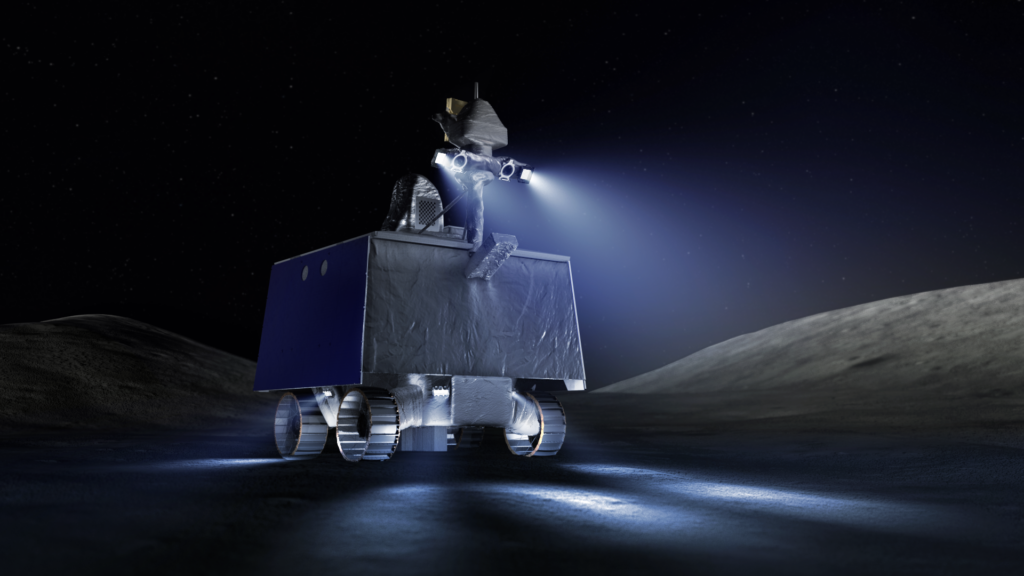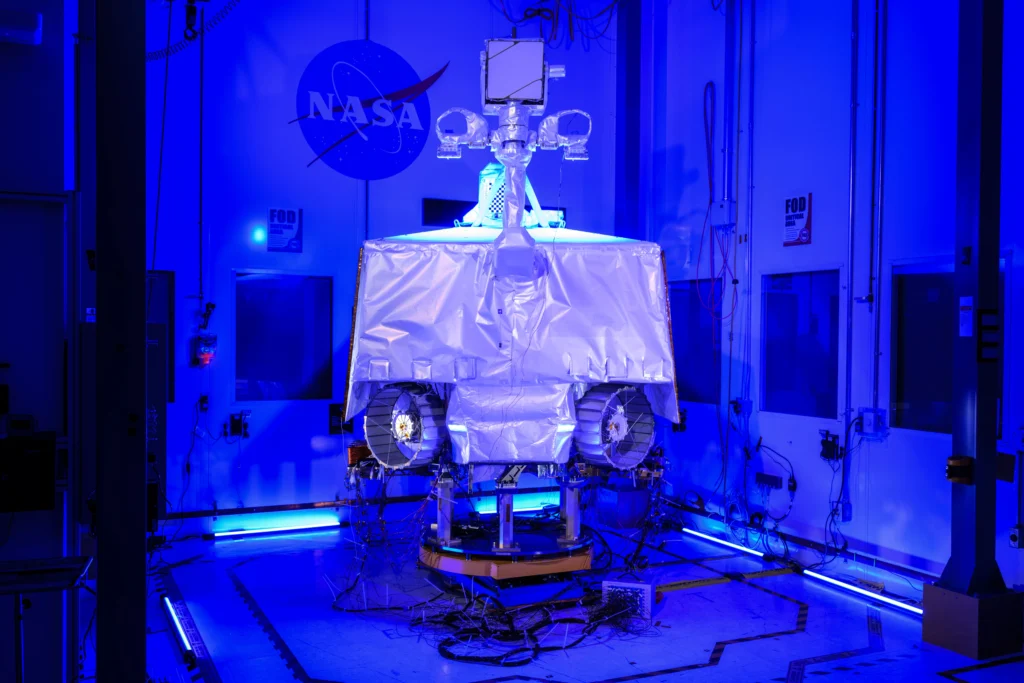NASA announced the cancellation of the VIPER robotic lunar rover mission, which was supposed to search for ice at the South Pole of the Moon. This was done due to delays in its development and cost overruns.
Technical design and main tasks of VIPER
VIPER was the first lunar rover to be developed by NASA. It was to be comparable in size to a golf cart. Its length and width were 1.5 m, height — 2.5 m, and mass — 450 kg. The apparatus was supposed to move with the help of four wheels. Its maximum speed was planned to be 0.72 km/h.

The launch of the lunar rover was originally set for 2023, later postponed to late 2024. VIPER was planned to be landed on the western edge of the 73-kilometer-long Nobile Crater by the Griffin lander built by Astrobotic. The main task of the lunar rover was to study the lunar soil to determine the percentage of water ice in it. To do this, VIPER had to use a drill, which allows it to extract samples from up to a meter deep, and three scientific instruments.
Reasons for project closure
Unfortunately, all these plans will remain on paper. At a briefing held on July 17, NASA representatives reported on the cancellation of the project. The reason for this was the increase in costs by more than 30%. In 2021, NASA approved a mission budget of $433.5 million. According to the latest estimates, it has grown to $609.9 million. At the same time, due to delays on the part of Astrobotic, VIPER could be launched no earlier than September 2025.

NASA’s rationale for the cancellation was that continued VIPER funding would have led to the cancellation of many missions in the CLPS program. From the outset, the project suffered from a number of supply chain issues with various components dating back to the days of the pandemic. They forced the mission team to delay assembly and testing of the lunar rover.
The lunar rover is now fully operational, but it just had to begin tests designed to certify its readiness to fly to the moon. Canceling VIPER now would save NASA at least $84 million. If the project faced new postponements, that amount would increase.
Therefore, NASA decided to cancel the project and disassemble the lunar rover to reuse its instruments and other components. But before that, VIPER will still get one last chance. NASA will consider proposals from U.S. companies and international partners to launch VIPER independently at no additional cost to itself. Proposals will be accepted until August 1.
Unless a miracle occurs, the instruments removed from VIPER will then be installed on other vehicles that will be launched to the Moon as part of the CLPS program. As for the Griffin lander, instead of a rover, it will land a mass-sized mockup on the Moon’s south pole. This should demonstrate its ability to deliver large loads. NASA considered installing scientific instruments on Griffin. But since the vehicle was designed solely for rover transportation, it lacks the space to accommodate them.
According to NASA


